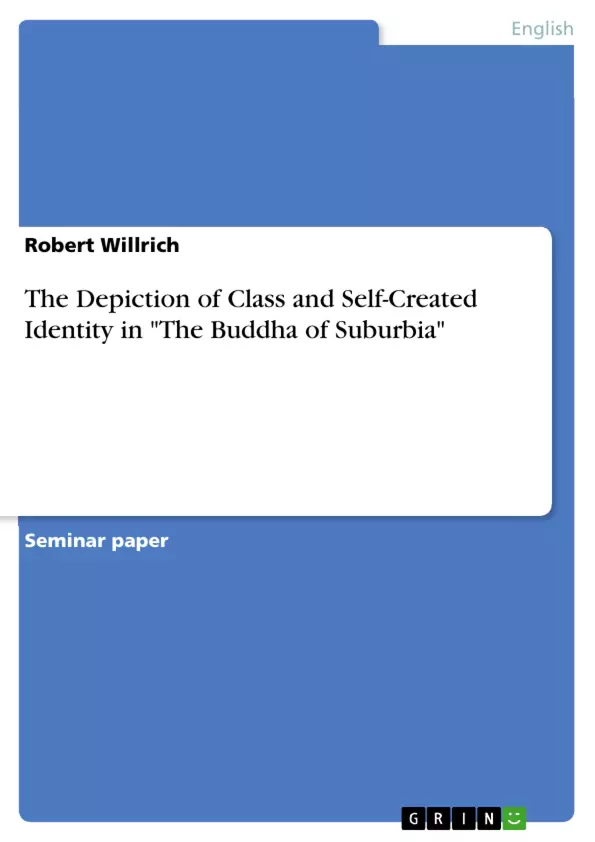Being one of Hanif Kureishi’s most famous works, The Buddha of Suburbia has been discussed numerously in academic writing. Up to now, most scholars have, unfortunately, only focussed on the most apparent topics of hybridity and racial as well as migrational identity. Although fairly striking, only few have paid attention to the British class system that is portrayed in the novel, and if they have, only in passing.
This paper is not intended to be added to this long list. I rather want to concentrate on how diverse and comprehensively the topic of class is approached by Kureishi, how class is depicted. For this reason, I want start with some more general facts about lower middle class, but will try to directly compare them to the contents of The Buddha of Suburbia.
Secondly, I aim to show how, especially, class is depicted and to describe what makes someone belong to a certain class. How is affiliation expressed and how can one distinguish from other social groups? What does influence our thoughts and beliefs, and why do people want to break out? In regard to this, I will pay special attention to how the suburbs are presented in the novel and to what extent they differ from London.
Finally, I want to examine in how far London offers a chance to flee suburbia and lower middle class influences. Does the anonymity of England’s capital provide the basis for a new self, to create something new, and leave the past behind? Do people have to surrender, not to say sacrifice, their old identities in order to make it in London? What is the price for climbing the social ladder, and can one find a new, but genuine, self after having left the old behind?
My paper shall answer these questions, it seeks to unfold some of the complexity of Kureishi’s début novel and to offer a new approach for interpreting The Buddha of Suburbia.
Inhaltsverzeichnis (Table of Contents)
- Introduction
- Lower Middle Class in Britain and its Portrayal in the Buddha of Suburbia
- The Depiction of Class
- Suburbia
- Housing and Appearance
- The Role of Education
- Jobs and Everyday Life
- London: The Chance to Invent a New Self
- The Depiction of London
- London: A Masquerade Ball?
- Being Oneself
- Conclusion
Zielsetzung und Themenschwerpunkte (Objectives and Key Themes)
This paper aims to explore the complex portrayal of class in Hanif Kureishi's The Buddha of Suburbia, focusing on the experiences of the lower middle class in Britain. It delves into the ways in which class is depicted in the novel, examining how individuals perceive and navigate their social status.
- The depiction of the British class system and its impact on individual lives.
- The contrasting experiences of the lower middle class in the suburbs and in London.
- The search for identity and the desire for social mobility in the context of class.
- The influence of social background on individual beliefs and aspirations.
- The role of London as a space for self-invention and escape from the limitations of the lower middle class.
Zusammenfassung der Kapitel (Chapter Summaries)
The paper begins by introducing the key concept of class in Britain and its significance in shaping individual opportunities. It then dives into the specific portrayal of the lower middle class in The Buddha of Suburbia, highlighting its characteristics and highlighting how the novel captures its experiences through the lives of its protagonists. The analysis then moves on to explore the depiction of suburbia and London, examining how these settings are associated with different social classes and the impact they have on the characters' lives.
Schlüsselwörter (Keywords)
This paper explores the themes of class, identity, social mobility, suburbia, London, and the lower middle class in the context of Hanif Kureishi's The Buddha of Suburbia.
- Citar trabajo
- Robert Willrich (Autor), 2009, The Depiction of Class and Self-Created Identity in "The Buddha of Suburbia", Múnich, GRIN Verlag, https://www.grin.com/document/143543



